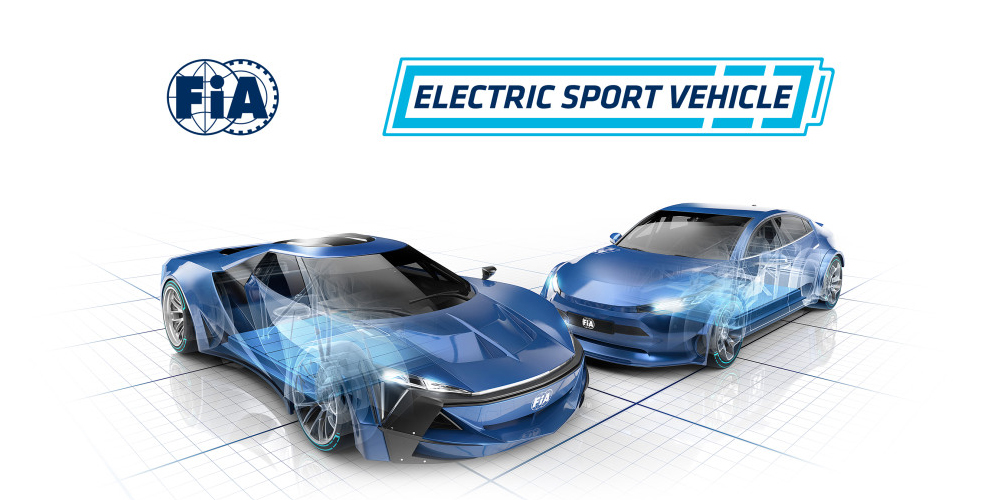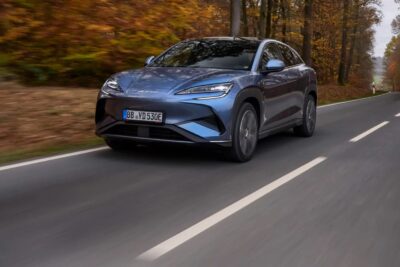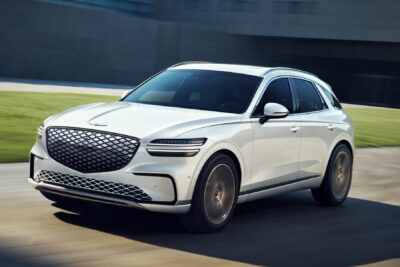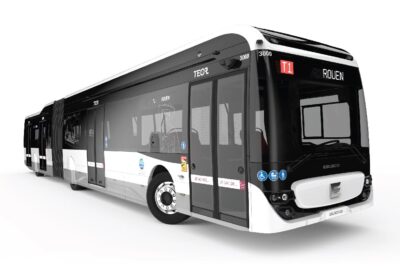FIA introduces new racing series concept
The Fédération Internationale de l’Automobile (FIA) has adopted a new set of regulations for electric motorsport vehicles. The regulations, called FIA Electric Sport Vehicles (FIA ESV), are intended to realise low-cost competitions with electric vehicles at national and regional levels with standardised specifications.
Electric cars are to be used with “minimal adaptations from the road-going production model”, according to the FIA. This would place the new racing vehicles in the touring car sector – defined as “passenger cars from large-scale production that are used in modified form for automobile races”. This is different from prototype motorsport, which uses vehicles developed specifically for racing, for example in Formula E or the Extreme E off-road racing series.
As with internal combustion touring cars, according to the technical regulations of the ESV, the body shape must remain basically unchanged, with the exception of extending the wheel arches to accommodate wider racing tyres and additional cooling ducts. In order to save weight, selected body parts such as the tailgate and doors, the rear wing and the diffuser may be replaced by equivalent parts made of lightweight materials that retain their original shape. Whether the body is a coupé or a sporty saloon is secondary, more important is the vehicle height: this has been set at a maximum of 1.46 metres.
According to the announcement, the minimum power of the drive is 300 kW, and both a pure rear-wheel drive and an all-wheel drive with a second electric motor on the front axle are possible. In addition, the vehicles are to have a standardised FIA data logging system. This should make it possible to monitor energy consumption in real-time at the request of the respective racing series.
The announcement included no further details on the battery and charging systems. Instead, safety-related requirements are mentioned: for example, the ‘Electric Sport Vehicles’ must have a safety light system, as is already used in other competitions for electric and hybrid vehicles. In other words, a clearly visible signal lamp must indicate whether, for example, the vehicle’s electrical system is safe in the event of an accident and whether rescue workers can touch the vehicle without the risk of electrocution.
Since, according to the FIA, the ESV has an “all-encompassing character” and a great many different series-production vehicles would be eligible as the base model for a race car, a “performance factor methodology” will also be introduced so that the organisers have the opportunity to group the cars according to their performance level. After all: theoretically, a 300 kW electric sedan (based on the Tesla Model 3, for example) can compete against a pure sports car with 1,000 kW or more according to the ESV regulations – i.e. a Lotus Evija or the possible production version of a Porsche Mission X. The Performance Factor creates a value for each car based on measured values “representing weight, drive unit and aerodynamic performance”, along with transmission and chassis parameters. Already in the internal combustion racing series, there is a so-called “Balance of Performance” to align different production cars.
“As the governing body of world motorsport, our responsibility is also to ensure that our knowledge and expertise are available to our member clubs as well as local organisers and promoters,” says Marek Nawarecki, FIA Director of Circuit Racing. “The FIA ESV revives the spirit of Group N, where a car purchased at a dealership, fitted with all the necessary safety equipment, was essentially competition-ready and suitable for various disciplines and formats.”
Lutz Leif Linden, President of the FIA’s GT Commission, even sees a potential business model for manufacturers with factory conversions of electric race cars: “The FIA ESV ruleset very much responds to the demands of the market. Having this set of technical regulations will allow the manufacturers’ customer racing departments to offer competition-ready variants of their electric cars, which should be a considerable source of revenue of them, much like GT3 is. It can even open the door for them to create their own one-make series.”
With reporting by Sebastian Schaal, Germany.





0 Comments